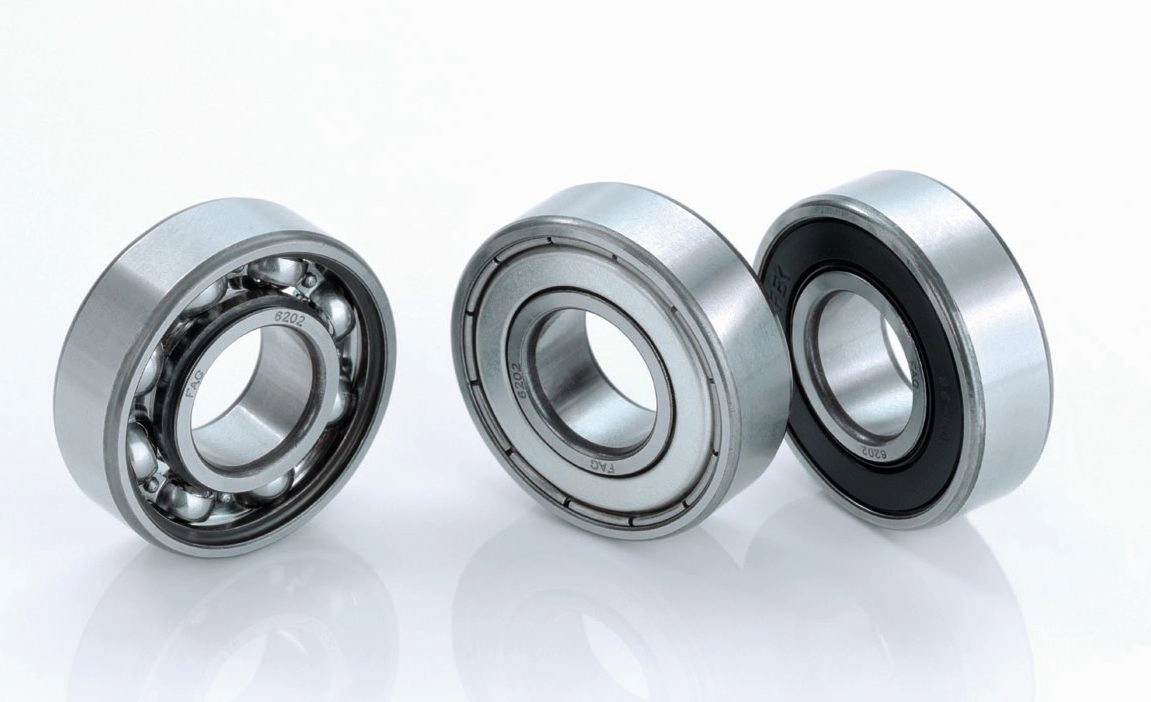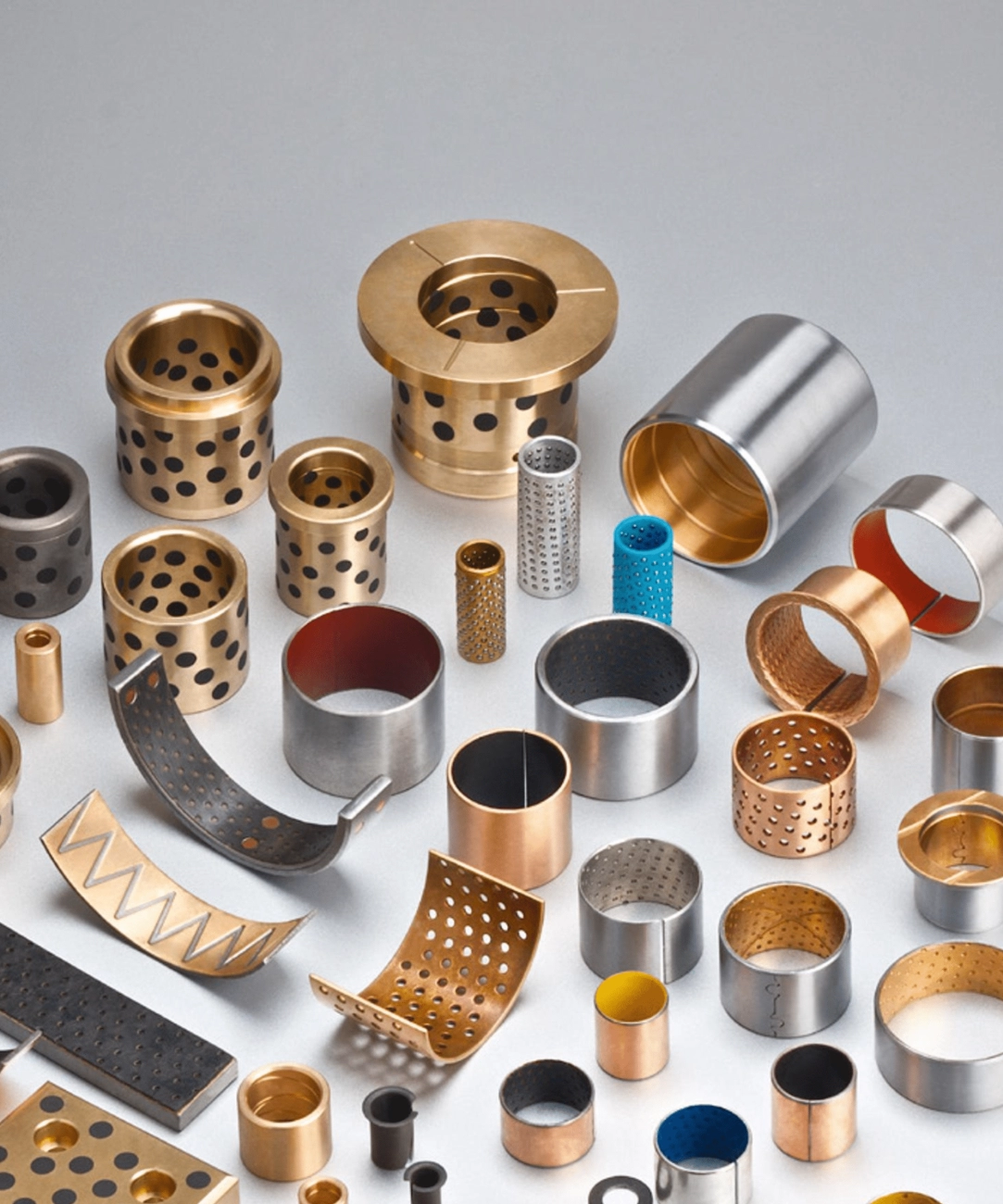Explore comprehensive insights on bearing types including ball, roller, and plain bearings plus selection and maintenance tips for optimal performance.
The Fundamentals of Bearings
Bearings are essential mechanical components that help reduce friction and support moving parts in machines. They allow parts to spin or slide smoothly, making everything from car wheels to electric motors work efficiently.
How Bearings Work
At their core, bearings manage motion by minimizing friction between moving parts. There are two main types:
- Rolling Element Bearings use small balls or rollers to roll between surfaces, reducing friction.
- Plain or Sliding Bearings rely on sliding motion with a thin lubrication film between surfaces.
Essential Parts of Bearings
Bearings consist of several key components that impact their performance:
- Races: The inner and outer rings that hold rolling elements and provide a track for movement.
- Rolling Elements: Balls or rollers that carry the load and reduce friction.
- Cages: Keep rolling elements spaced evenly to prevent contact and reduce wear.
- Seals and Shields: Protect the inside of the bearing from dirt and moisture, extending life.
Each part plays a vital role in maintaining smooth motion and durability.
Load Types Bearings Handle
Bearings support different types of loads, which influences the type you choose:
- Radial Loads push perpendicular to the shaft (like the weight on a bike wheel).
- Axial Loads (or thrust loads) push parallel to the shaft (like the force when a screw is tightened).
- Combined Loads are a mix of both radial and axial forces.
Knowing the load type is critical to picking the right bearing for your application.
Rolling Element Bearings Ball Bearings Versatile and Precision Focused

Ball bearings are one of the most common types of rolling element bearings you’ll find. They use small, hard balls between two races to reduce friction and support both radial and axial loads. Their design makes them super versatile and great for applications where precision and smooth motion matter.
Subtypes of Ball Bearings
- Deep Groove Ball Bearings: The most popular type, good for handling both radial and light axial loads. You’ll see these in everything from electric motors to household appliances.
- Angular Contact Ball Bearings: Designed to handle higher axial loads in one direction, making them ideal for machines where precise alignment and speed are important.
- Self Aligning Ball Bearings: These are perfect when your setup has misalignment or shaft deflections. They can handle structural shifts without losing functionality.
Pros and Cons
Pros
- Low friction meaning less energy loss and longer life
- Compact size fits well in tight spaces
- High speed capabilities make them suitable for fast-moving parts
Cons
- Limited in handling really heavy loads compared to roller types
- Not the best choice for extremely high axial thrust
Applications
You’ll find ball bearings used widely across industries here in the U.S., including:
- Electric motors powering tools and appliances
- Automotive wheels and transmissions helping with smooth drives
- Consumer electronics like computers and fans needing quiet, precise rotation
Ball bearings combine efficiency and reliability, making them a go-to choice for many standard mechanical tasks.
Rolling Element Bearings Roller Bearings Built for Heavy Duty Loads
Roller bearings are designed to handle heavy loads better than ball bearings. They use cylindrical, tapered, or spherical rolling elements that spread the load over a larger area. This makes them perfect for tough jobs where strength and durability are key.
Types of Roller Bearings
- Cylindrical Roller Bearings: Great for high radial loads and moderate speeds.
- Tapered Roller Bearings: Handle both radial and axial loads, often used in automotive hubs.
- Spherical Roller Bearings: Self-aligning and good for heavy, uneven loads.
Pros and Cons
- Pros
- Excellent load distribution
- Ideal for heavy-duty applications
- Can handle shock and vibration well
- Cons
- Higher friction than ball bearings at very high speeds
- Generally larger and heavier
Common Applications
You’ll find roller bearings in conveyor systems, wind turbines, and heavy machinery where strong support is essential. Their durability and load capacity make them a smart choice for industrial and construction equipment used across the United States.
Rolling Element Bearings Specialized Variants Needle and Slewing Bearings
Needle and slewing bearings are specialized types of rolling element bearings designed for unique applications. Needle bearings use thin, long rollers that fit into tight, compact spaces but still handle high loads. They’re perfect when you need a small bearing with big strength, often found in automotive transmissions and small machinery.
Slewing bearings are large-diameter bearings that support heavy rotational loads, often seen in cranes, wind turbines, and heavy equipment. They handle both axial and radial loads, making them ideal for large, slow-moving parts that need smooth rotation.
When comparing these to ball or standard roller bearings, needle bearings offer a space-saving advantage without sacrificing load capacity, while slewing bearings cover the heavy-duty, low-speed end of the spectrum. Both fill gaps that typical ball and roller bearings can’t always handle efficiently, giving you options depending on your space and load needs.
Plain and Sliding Bearings Reliable for Low Speed High Load Scenarios

Plain and sliding bearings are a solid choice when you need dependable performance at low speeds with heavy loads. Unlike rolling element bearings, these use bushings or sleeves that create a smooth sliding motion, often relying on a thin lubrication film to reduce friction between parts.
Types of Plain Bearings
- Journal Bearings: Support shafts rotating inside them, common in engines and turbines.
- Thrust Washers: Handle axial loads, preventing movement along the shaft’s axis.
- Spherical Plain Bearings: Allow some angular misalignment, useful where shafts don’t stay perfectly in line.
- Angular Contact Designs: Adapted for specific load direction challenges and misalignment.
Advantages and Disadvantages
- Pros
- Cost-effective and straightforward design
- Very quiet operation compared to rolling bearings
- Handles shock loads well
- Cons
- Requires consistent lubrication to avoid wear
- Can generate more friction if lubrication is insufficient
- Not suitable for very high-speed applications
Common Applications
You’ll often find plain and sliding bearings in turbines, ship propellers, and low-friction hinge points where rolling element bearings might fail or be less efficient. Their ability to handle heavy loads quietly and reliably makes them a go-to choice when speed isn’t the priority.
For more details on choosing the right bearing type, check out our guide on [bearing maintenance and selection].
Advanced Bearing Types Innovations for Specialized Needs
When standard bearings don’t cut it, advanced bearing types step in with specialized solutions. These include fluid bearings that use a thin film of liquid to support loads, offering ultra-smooth, non-contact operation with minimal friction—perfect for high-speed, precision equipment. Magnetic bearings take non-contact support further, using magnetic fields to levitate shafts, eliminating wear and boosting longevity in demanding environments.
Flexure bearings and jewel bearings are designed for micro-movements and precision tasks. Flexure bearings use bending elements for smooth, tiny adjustments without friction, while jewel bearings use hard gem materials for reliable, low-friction motion in instruments and delicate machines.
Emerging trends focus on hybrid bearings that combine ceramic and metal materials. These hybrids handle extreme temperatures and harsh conditions better than traditional options. Companies like Vast are at the forefront of R&D, tailoring these advanced bearings to meet the tough demands of industries like aerospace, automotive, and energy, keeping U.S. engineers competitive and reliable.
How to Select the Right Bearing Type for Your Application
Picking the right bearing can make or break your equipment’s performance. Here’s a simple step-by-step guide to help you narrow down your options:
Step by Step Guide
- Assess Load DirectionFigure out if the load is mostly radial, axial, or a combination. Ball bearings handle axial and radial loads well, while roller bearings are better for heavy radial loads.
- Consider SpeedFor high-speed applications, low friction bearings like deep groove ball bearings are ideal. For slower, heavy-load cases, plain bearings or roller bearings might work better.
- Evaluate the EnvironmentHarsh environments with dust, moisture, or chemicals require bearings with effective seals or shields to keep contaminants out.
- Check for Contamination RisksIf dirt or debris is expected, sealed or shielded bearings help extend life.
- Account for TemperatureHigh or low temperatures call for special bearing materials or lubricants—sometimes hybrid ceramic-metal bearings are the answer.
- Measure Space ConstraintsAvailable space limits your bearing choice. Needle bearings offer high load with small profiles, while slewing bearings need plenty of room for large diameters.
Common Pitfalls to Avoid
- Misalignment RisksChoosing a bearing that can’t handle shaft misalignment leads to early failure. Self-aligning ball bearings or spherical roller bearings help here.
- Over LubricationToo much lubricant causes heat and drag, too little causes wear. Follow manufacturer specs closely.
Decision Matrix at a Glance
| Factor | Ball Bearing | Roller Bearing | Plain Bearing |
|---|---|---|---|
| Load Type | Radial + Axial (light/mod) | Heavy Radial | Radial + Axial (heavy) |
| Speed | High | Medium | Low |
| Alignment Tolerance | Moderate | Low | High |
| Space | Compact | Larger | Varies |
| Maintenance | Moderate | Higher | Lower |
Vast Recommendation
For custom fits and precise advice, I recommend consulting with engineers and using online bearing configurators. Vast offers expert support and tools tailored to your needs, helping you select the perfect bearing quickly and confidently. This is especially useful in specialized US industries where efficiency and reliability count.
Maintenance Best Practices for Bearings
Keeping your bearings in good shape is key to extending their life and keeping machines running smoothly. Here’s what I focus on for maintenance:
Routine Checks
- Alignment: Make sure bearings are properly aligned to avoid extra wear.
- Lubrication Intervals: Follow recommended schedules for adding grease or oil to reduce friction.
- Vibration Monitoring: Regularly check for unusual vibrations which can signal bearing issues early.
Troubleshooting Signs of Failure
- Noise: Grinding or squealing often means lubrication is low or parts are damaged.
- Heat: Excessive heat can suggest overload or poor lubrication.
- Quick Fixes: Sometimes re-lubricating or realigning can prevent major damage.
Pro Tips
- Use IoT sensors for real-time monitoring and predictive maintenance—this helps catch problems before they cause downtime.
- Check out Vast’s online resources and service support to get expert advice suited for your bearings and applications.
Following these practices helps reduce unexpected failures and keeps your equipment running efficiently.